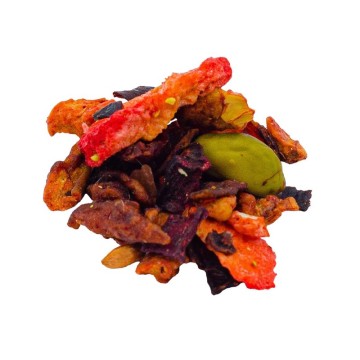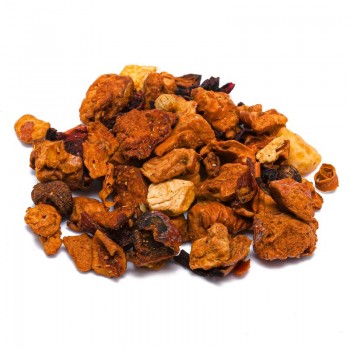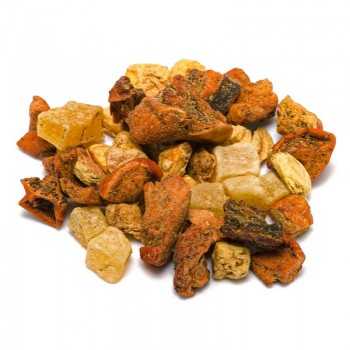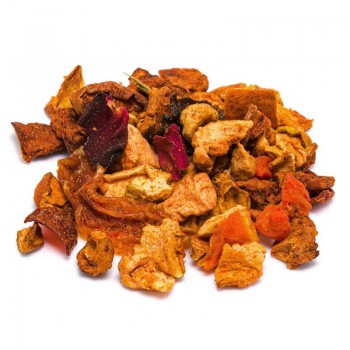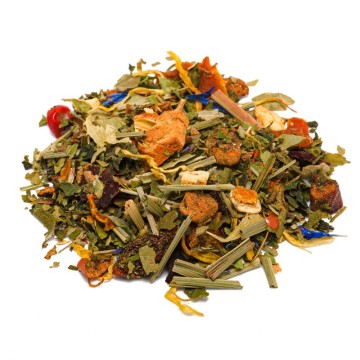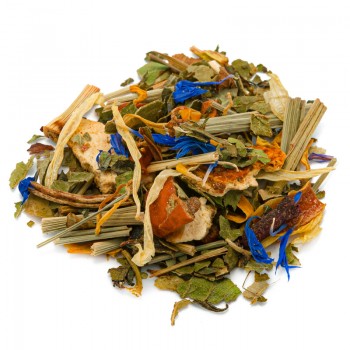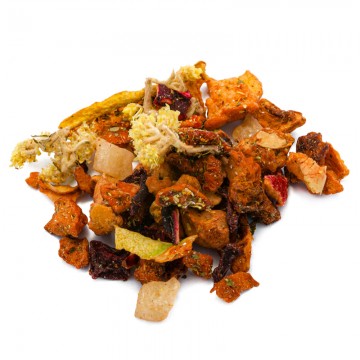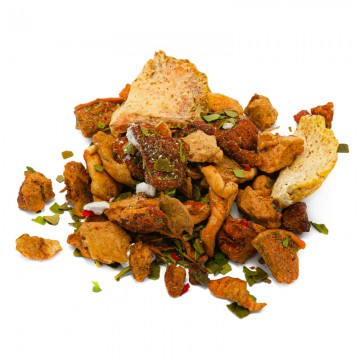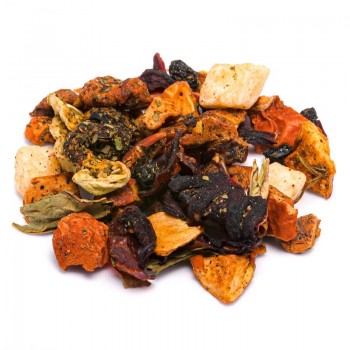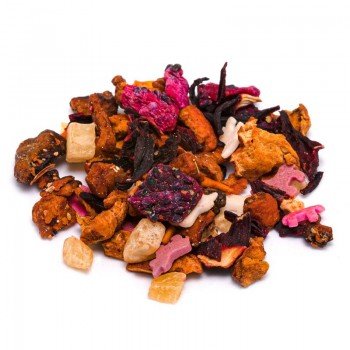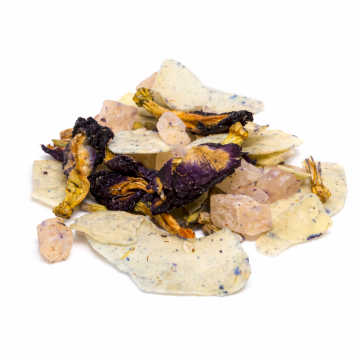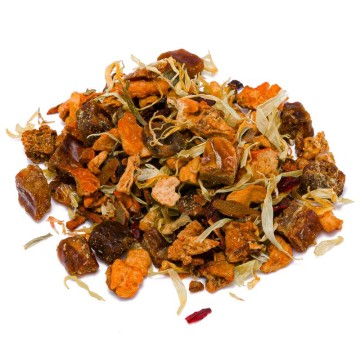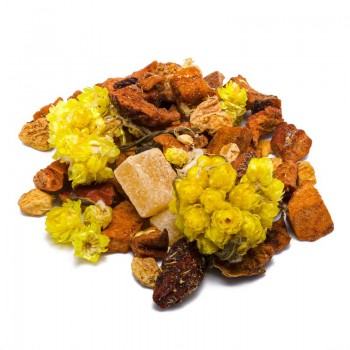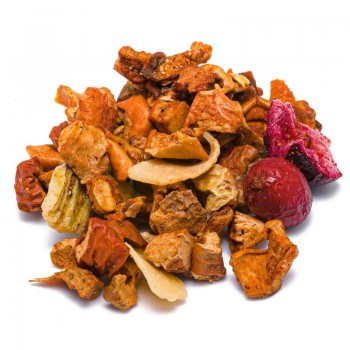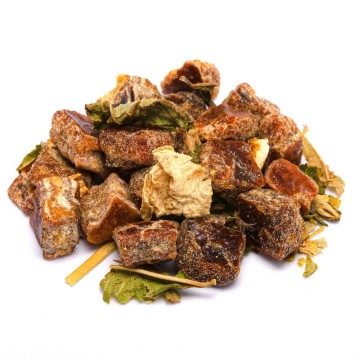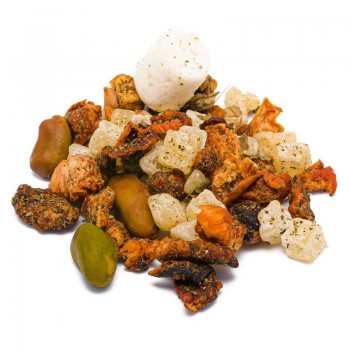Warm and comforting, this drink warms the senses and thoughts, to enjoy moments of pleasure among spicy and fruity aromas. The apple, grapes and rosehip give flavors between sweet and sour that tickle the palate, nuanced by the aromas of cinnamon and almond. An exquisite and enveloping combination, which gives typical winter delights to be enjoyed all year round. An explosive mixture of excellent goodness, between the intense notes of cinnamon sticks and the floral flavor of hibiscus, pleasantly sweet and sour.
Apple and cinnamon infusion: properties and benefits
By taking this infusion you obtain all the excellent properties of the apple, which combined with other ingredients represent a source of vitamins and well-being for the body. The infusion makes available the virtues of the different ingredients, of which the apple is the main one. Known since ancient times for its beneficial qualities, in particular for digestion. Thanks to pectin, it regulates the intestinal bacterial flora, purifies toxins, promoting the transit and assimilation of food.
The powder obtained from cinnamon bark is also a natural purifier, with notoriously digestive properties. The detoxifying qualities of apple and cinnamon infusion remove toxins from our body through digestion, reducing the load on the liver and kidneys. Furthermore, studies have been done on the possibilities that the intake of cinnamon gives the body to regulate blood sugar and cholesterol levels, promoting a good balance in the assimilation of food. The addition of cinnamon to apple amplifies its natural positive role on the metabolism of sugars and fats, also thanks to the manganese contained. Furthermore, the stimulating and beneficial effect on the digestive system prevents constipation and slow digestion. The acids of apple and hibiscus, together with other ingredients, create an excellent infusion after meals.
An infusion of hot apple and cinnamon facilitates the purification of the respiratory tract and counteracts the symptoms of congestion. It also counteracts irritation, thanks to the natural anti-inflammatory compounds in cinnamon. Apple and cinnamon infusion can help strengthen the immune system with the supply of vitamin B6, K, and vitamin C from other ingredients such as rosehip and hibiscus, which is also rich in anthocyanins. The antioxidant capacity of cinnamon bark promotes the protection of cells from damage that can be caused by free radicals (reactive oxygen molecules present in cases of pollution, poor nutrition, smoking, etc.). An action also carried out by hibiscus and rosehip, and by grapes rich in antioxidants.
Reduces stress thanks to the relaxing properties of apple and almonds, easing muscle tension and headaches. Almonds promote the natural production of melatonin and energy metabolism thanks to magnesium.
Origins and history of cultivation
The herbal tea blend has various elements that help the well-being of our body. The aroma of cinnamon comes from the bark of the trees of the same name, originally discovered on the island of Sri Lanka, on the southeastern coast of India. It was considered the true cinnamon, (Cinnamomum zeylanicum) and evidence of its use dates back to Chinese writings from 2800 BC. - still today in the Cantonese language it is called kwai. The botanical name derives from the Arabic term amomon, which means fragrant aromatic plant. The Italian name comes from its shape: cinnamon as "small rod or tube", describes the sticks. For centuries, cinnamon has been a rare commodity throughout Western Asia, Europe, and Africa, used as a culinary spice for its pleasant aroma and warming flavor. Over time, it also spread outside Sri Lanka (formerly Ceylon) and today it is also known for its benefits on the body. It was also cultivated in other regions, after the fall of the Ceylon monopoly, such as Java, Sumatra, Borneo, Mauritius, South America and in other tropical climates. In modern naturopathy, cinnamon is considered a natural remedy and, in any case, it can be a beneficial addition to a healthy lifestyle. The apple is, without a doubt, the best-known fruit in the world and derives from a species of plant, Malus, native to Asia. Its history is deeply intertwined with humanity: ancient seeds from archaeological sites from around 10,000 years ago attest to the fact that wild apples were harvested throughout Europe and Western Asia. We know from genetic studies that the modern apple is a hybrid of at least four wild apples, traded along the Silk Road for centuries. Today the apple tree is grown in the areatemperate entities around the world, after a process of tree domestication and cultivation. Over time, hundreds of varieties have been born, with hybridizations that have given rise to the large red and sweet fruits that we know, up to the many varieties on the table and for the food industry.
Fruits and flowers
The apple plant, Malus domestica of the Rosaceae family, is native to Asia. Apple trees are broad-leaved plants, which grow up to 5 meters tall in cultivation and 10 meters in the wild. The dark green leaves are oval in shape, while the apple blossoms range from white to pale pink. Most apple fruits have red, yellow, green or pink skin, depending on the variety. The pulp is whitish, sometimes with a pink or yellow tint. Cinnamon comes from the Cinnamomum verum plant, also called Ceylon cinnamon, a bushy evergreen tree of the Lauraceae family. The spice comes from its dried inner bark, displaying a delicate aroma and a sweet, warm flavor. Various related species are cultivated as a source of cinnamon, including Chinese cassia (Cinnamomum cassia), Indonesian cinnamon (C. burmannii), Vietnamese cinnamon (C. loureiroi), and Malabar cinnamon (C. citriodorum). The dog rose is a plant that belongs to the Rosaceae family, among the over three hundred species and cultivars present - mostly originating from Asia. For nutrition and herbal medicine, both the petals and fruits of this rose are used. It grows as a shrub with thorny stems, serrated leaves and colorful flowers. It gives the fruit of the rosehip, composed of dried fruits enclosed in a cup. Hibiscus is a herbaceous plant which in its variety used for infusions is Hibiscus sabdariffa, also called rosella. It is a plant of the Malvaceae family and probably native to West Africa. The variety is grown for the edible outer portion of its flower (calyx). The grape comes from the Vitis vinifera L. plant, a genus of shrubby plants belonging to the Vitaceae family. This vine is a vigorous climber, which can easily cover walls and surfaces if left to grow uncontrolled. It shows large, lobed, bright green leaves up to 15 cm long. The tiny green summer flowers are followed by the famous fruits with globular clusters - which vary depending on the variety of the vine.
Nutritional values of apple and cinnamon infusion
The main active ingredients are acids (ascorbic, malic, citric and tartaric acid), vitamins and mineral salts released by fruit. Furthermore, cinnamon makes elements such as cinnamic acid, eugenol, cinnamaldehyde and tannins available.
How to use the ingredients in the infusion The infusion is obtained by inserting approximately 3-5 grams of the apple and cinnamon with water at 100°C. Leave to infuse for 10 to 12 minutes before drinking. Add honey or sugar, if desired.
Apple and cinnamon infusion: side effects and contraindications
Even if the infusion brings benefits, it is necessary to respect the recommended doses and not exceed consumption for too long periods. Excessive intake can cause constipation, headache, stomach acidity, gastrointestinal disorders, nausea.

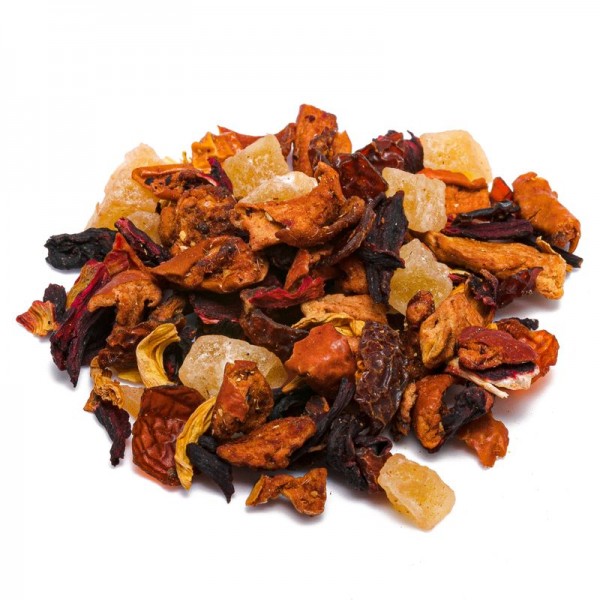









 No reward points for this product.
No reward points for this product.
